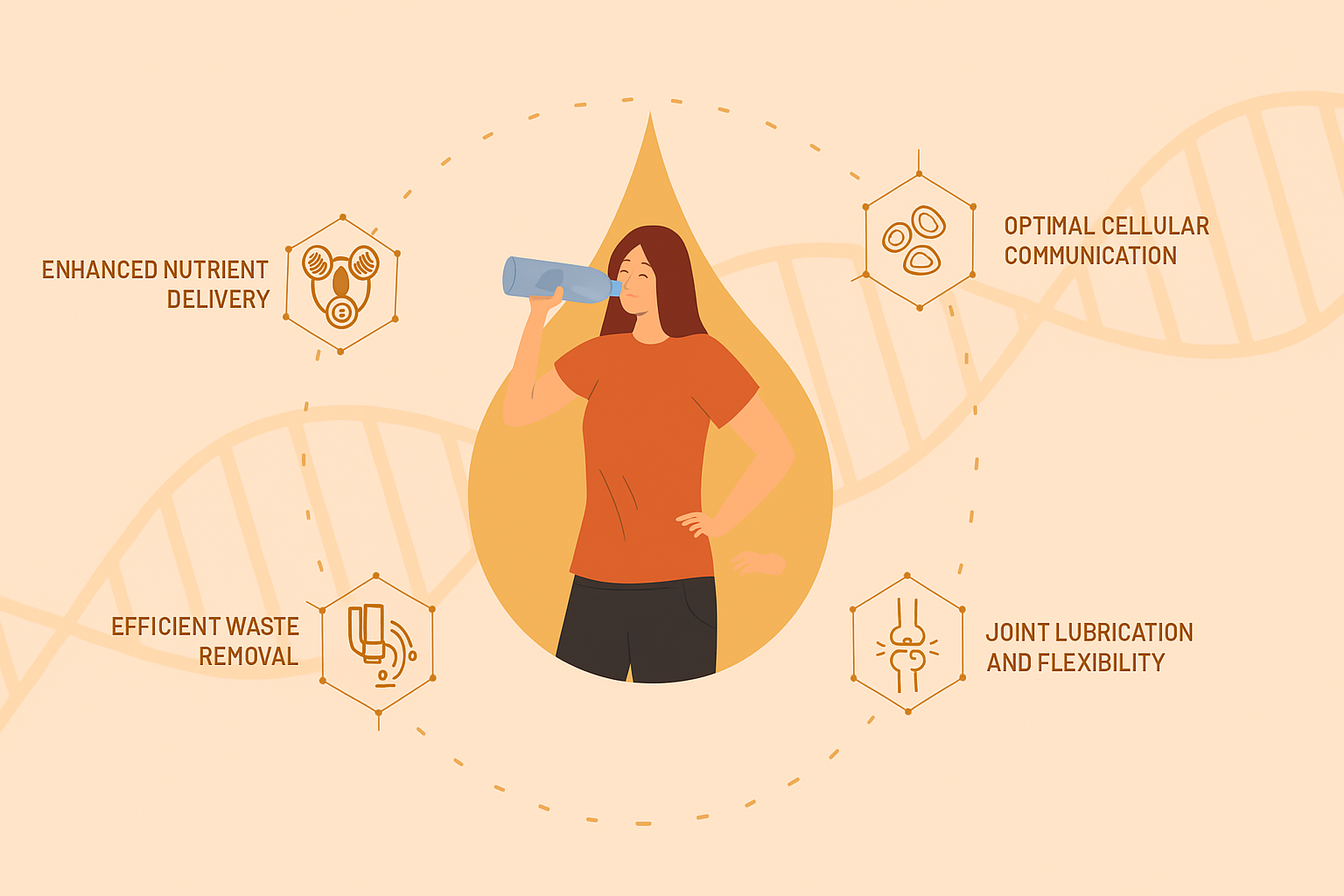Cellular Hydration: The Missing Link to Aging Gracefully
When we think about hydration, most of us assume it’s about drinking more water. But here's the truth: true hydration starts at the cellular level, and if your cells aren’t absorbing that water, you’re still dehydrated—no matter how much you drink.
Why Cellular Hydration Matters as You Age
Ever feel brain fog, low energy, body stiffness, or unexplained puffiness? These are classic signs of intracellular dehydration—your cells are thirsty, and it's affecting how you move, look, and feel.
As we age, our ability to retain and absorb water at the cellular level declines. This affects everything from our fascia system to our lymphatic flow, two major players in how vibrant and youthful we feel.
What Is Cellular Hydration, Really?
Cellular hydration is more than just fluid intake. It’s about getting water into your cells, not just drinking it and flushing it out. Without this deeper hydration, your body can’t properly detox, your fascia becomes stiff and stuck, and your lymph fluid slows down—turning into a thick, glue-like substance that blocks your detox pathways.
This is where things like structured water, minerals, and trace elements come into play.
How I Support Cellular Hydration Daily
Here’s what I use and recommend for boosting hydration and reducing inflammation, puffiness, and stagnation in the body:
1. Sea Mineral Ampoules
I use two kinds of sea mineral ampoules:
Daily use: A micro-mineral support for daily hydration.
Hyper use: For high-demand days like hot yoga or post-wine recovery.
I just crack one open, pour it into water, and drink. It's easy, effective, and my cells love it.
2. Structured Water System
My home water system goes way beyond reverse osmosis. It has:
Charcoal filtration
Reverse osmosis
A structuring component
Structured water reorganizes water molecules into a negatively charged, bioavailable state. This means water actually enters your cells, delivers nutrients, and removes toxins—rather than just making you pee more and lose minerals.
3. Mineral-Rich Sea Salt or Himalayan Salt
Just a pinch (about 1/4 teaspoon) of sea salt in 16 oz of water can make a big difference. Why? Because it's rich in trace minerals that help water actually absorb and be utilized in your body.
4. Water-Rich Foods
Add more fruits, cucumbers, and water-dense veggies to your meals. These foods are naturally hydrating and packed with electrolytes that support fascia and cellular health.
The Fascia-Hydration Connection
You know I’m all about fascia. Here’s the deal:
Your fascia is made of collagen and water. When you're dehydrated, fascia becomes dry, sticky, and stiff—leading to pain, limited movement, and toxin buildup.
When fascia is well-hydrated, it becomes supple, responsive, and detox-friendly. It’s the difference between feeling heavy and slow versus feeling limber and light.
And don’t forget your lymphatic system—it's 90% water-based and responsible for detoxing waste, hormones, and inflammation. When dehydrated, lymph turns gelatinous and slows down your entire body’s natural detox cycle.
Hydration Is the Foundation of Ageless Living
If you want to glow from the inside out, hydration must go beyond water. It’s about using the right tools and nutrients to help your body absorb that water, not just pass it through.
So if you’re:
Feeling stiff
Waking up puffy
Struggling with low energy or brain fog
Seeing signs of premature aging
…start with cellular hydration.
✅ Takeaway Tips:
Add trace mineral ampoules to your daily water.
Upgrade to structured water if possible.
Don’t fear a pinch of high-quality salt.
Eat more hydrating foods like fruits and cucumbers.
Stay consistent and listen to your fascia—it always speaks up.
💧Want help restoring your hydration and fascia health?
Book a FasciaTherapy session or learn more about my personalized programs at TamaraRenee.com — your body will thank you.
With love and light,
Tamara Renee
Certified Natural Beauty & Health Consultant
Helping women age well and glow from within




